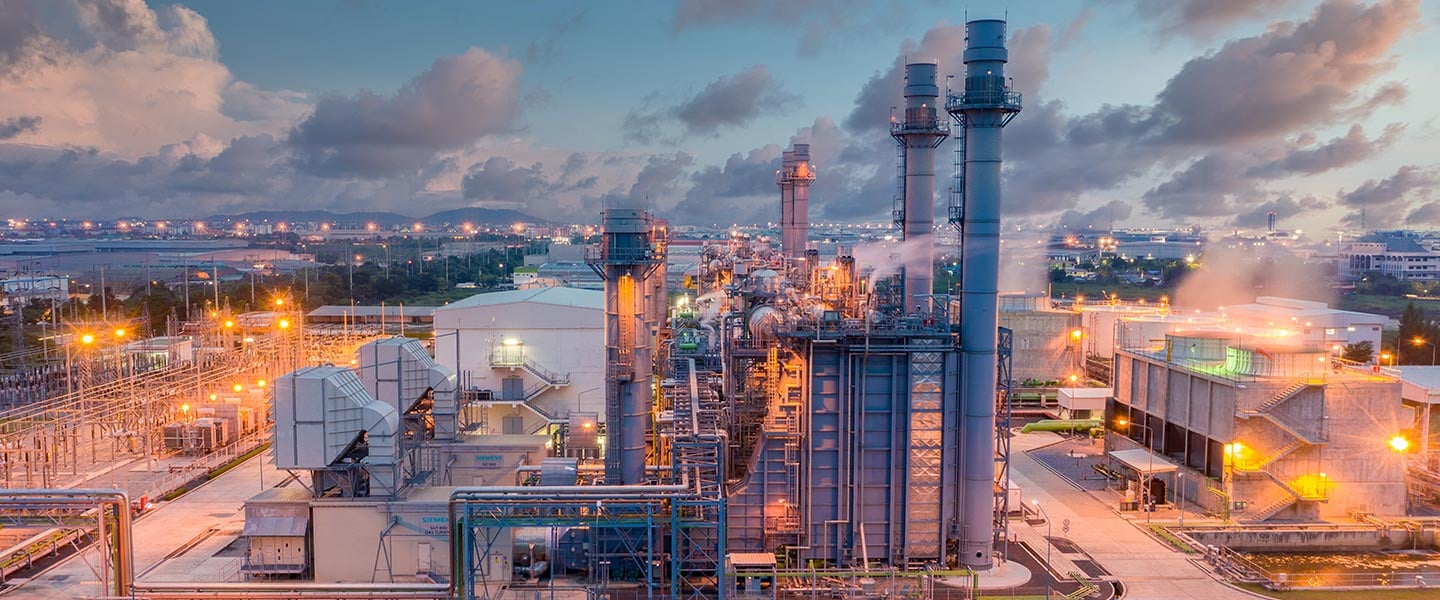-
Business Consulting
Our business consulting specialists offer a comprehensive blend of strategic advisory services. We assess the business, industry, operating model, synergy, skill sets and vision of the organisation and recommend the way forward
-
Digital Transformation Services
Grant Thornton’s digital transformation services help traditional businesses digitalise their business models with cloud technology, IoT consulting, app development and more DigiTech solutions.
-
Human Capital Consulting
Our Human Capital Consulting team harnesses technology and industry expertise to assist in constructing adaptable organisations with transparency, fostering productive and value-driven workforces, and inspiring employees to engage meaningfully in their tasks.
-
Production Linked Incentive Scheme
Production-linked Incentive Scheme by the Indian government is aimed at boosting manufacturing. Grant Thornton Bharat offers varied services across sectors to help businesses avail of this scheme.
-
Public Sector Advisory
Our Public Sector Advisory team has focused streams, aligned with the core priorities of the Government of India. We are responsible for providing innovative and customized technical and managerial solutions.
-
Tech Advisory
We have amalgamated Digital Transformation, IT Advisory & Information Management and Analytics into a new offering, DigiTech.
-
Direct Tax services
Our tax specialists offer a comprehensive blend of tax advisory, tax litigation, regulatory and compliance services, helping you navigate through complex business matters.
-
Indirect Tax Services
Get tax advisory service by leading tax firm Grant Thornton India. Our indirect tax services include advisory, compliance and litigation services for corporate, international and transaction tax
-
Transfer pricing services
Our transfer pricing services experts provide a range of services from provision of APA services to handling large global assignments including Country by Country reporting.
-
US Tax
At Grant Thornton, we help individuals and dynamic companies deal with US tax laws, which are one of the most complicated tax legislations across the world.
-
Financial Services - Tax
Best financial advisory services, tailored for small and large businesses by the experts having comprehensive knowledge of domestic laws and access to multifaceted tools to provide a valuable results.
-
Financial Reporting consulting services
Our experts have significant hands-on experience in providing IFRS/US GAAP services, end-to-end solutions and support services to fulfil financial reporting requirements.
-
Fund accounting and financial reporting
International operations often lack standardisation and have varied local reporting formats and requirements. Our experts can offer proactive insights, practical guidance, and positive progress and help meet regulatory timeframes.
-
Compliance and Secretarial Services
Our experts can assist in overhauling the entire compliance machinery of the organisation through evaluation of the applicable statutory obligations, monitoring of adequate governance controls, reporting and providing ongoing support.
-
Global People Solutions
As businesses transcend borders, both domestic and global considerations need equal attention. Our interim CFO and financial controller support services help organisations meet the business vision.
-
Finance and accounting outsourcing
Our accounting experts assist organisations in managing their accounting and reporting. Our dedicated Integrated Knowledge and Capability Centre (IKCC), allows us to service both the domestic and global markets efficiently and cost-effectively
-
Compliance Management System
We have automation solutions for you that will allow meeting government requirements and remain diligent, which when failed, can lead to penalties and loss in revenue.
-
IKCC: Grant Thornton's Shared Service Centre
The India Knowledge and Capability Centre (IKCC), aimed at delivering solutions by developing capabilities, has completed four years of its journey.
-
Global compliance and reporting solutions
At Grant Thornton Bharat, we meet the challenges of our clients and help them unlock their potential for growth. Our professionals offer solutions tailored to meet our clients’ global accounting and statutory reporting requirements. With first-hand experience of local reporting requirements in more than 145+ locations worldwide, we provide seamless and consistent international service delivery through a single point of contact.
-
Related Party Transactions Governance
Related Party Transactions Governance
-
Private Client Services
Private Client Services
-
Labour codes
Labour codes solutions help you transition through the new legislation. At Grant Thornton, we help businesses divide their approach to make sure a smooth transition.
-
Alerts
At Grant Thornton India, with the help of our tax alerts, we help to provide updates on how to minimise your tax exposure and risks.
-
Cyber
In today’s time, businesses have gone through large transformation initiatives such as adoption of digital technologies, transition to cloud, use of advanced technologies et al.
-
Governance, Risk & Operations
Our Governance, Risk and Operations (GRO) services encompass Internal Audit, Enterprise Risk Management, Internal Financial Controls, IT advisory, Standard Operating Procedures and other services.
-
Risk analytics
Grant Thornton Bharat’s CLEARR Insights is a state-of-the art data analytics platform that will help you in seamless data analysis and efficient decision-making.
-
Forensic & Investigation Services
The team of forensic advisory services experts consists of the best intelligence corporate experts, and fraud risk, computer forensic experts to deliver most effective solutions to dynamic Indian businesses.
-
ESG consulting
Grant Thornton Bharat offers holistic ESG consulting solutions for sustainable business outcomes. With industry expertise and AI technology, we drive long-term value.

-
Transaction Tax Services
Our transaction tax experts understand your business, anticipate your needs and come up with robust tax solutions that help you achieve business objectives ensuring compliance and efficiency
-
Deal Advisory
Unlike other M&A advisory firm in India, we offer deal advisory services and work exclusively with controlled and well-designed strategies to help businesses grow, expand and create value.
-
Due Diligence
Grant Thornton’s financial due diligence services are aimed at corporate looking for mergers and acquisitions, private equity firms evaluating investments and businesses/promoters considering sale/divestment.
-
Valuations
As one of the leading valuation consultants in India, Grant Thornton specializes in all the aspects of the process like business valuation services, financial reporting, tax issues, etc.
-
Overseas Listing
Overseas listing presents a perfect platform for mid-sized Indian companies with global ambitions. Grant Thornton’s team of experts in listings, work closely with clients during all stages.
-
Debt & Special Situations Solutions
Grant Thornton Bharat offers specialist debt and special situations consulting services, including restructuring, insolvency, and asset tracing solutions.
-
Financial Reporting Advisory Services
Financial Reporting Advisory Services
-
Financial Statement Audit and Attestation Services
Financial Statement Audit and Attestation Services

- Agriculture
- Asset management
- Automotive and EV
- Aviation
- Banking
- Education and ed-tech
- Energy & Renewables
- Engineering & industrial products
- FinTech
- FMCG & consumer goods
- Food processing
- Gaming
- Healthcare
- Urban infrastructure
- Insurance
- Media
- Medical devices
- Metals & Mining
- NBFC
- Pharma, bio tech & life sciences
- Real estate and REITs
- Retail & E-commerce
- Specialty chemicals
- Sports
- Technology
- Telecom
- Transportation & logistics
- Tourism & hospitality
-
India-UK
India-UK

Efficiency in energy usage has emerged as a pivotal aspect of fostering just and sustainable energy transitions, offering a crucial mechanism for reducing carbon footprints in the global economy. Doubling energy efficiency entails a transformative endeavour aimed at optimising energy utilisation while minimising waste and emissions. It signifies a concerted effort to enhance the productivity and sustainability of energy systems, thereby unlocking profound socioeconomic benefits. Recognising this, the International Energy Agency (IEA) underscores energy efficiency as the cornerstone, often presenting the most cost-effective means for nations to optimise energy consumption. Recent analyses from the IEA highlight substantial advancements in global energy intensity improvements over the past two decades, resulting in heightened energy utilisation and significant reductions in CO2 emissions.
The significance of energy efficiency is magnified when aligned with key global objectives, such as climate mitigation under SDG 13 and the Paris Agreement. The IEA estimates that enhancing energy efficiency could contribute economically to 40 per cent of the emissions reduction targets outlined in the Paris Agreement. Furthermore, combining renewable energy sources with energy efficiency measures not only facilitates sustainable development but also unlocks energy applications previously deemed unattainable. Doubling efficiency could yield substantial benefits, including a reduction in energy demand by 190 EJ (Exajoule) and a decrease in CO2 emissions by 11 Gt (Gigatonnes) by 2030, while also enhancing energy security, affordability, and creating over 12 million jobs, and providing electricity access to 800 million people. These efforts align closely with the Paris Agreement and SDG 7.
Global and Indian Endeavours
While global primary energy intensity improved by 2 per cent in 2022, it needs to double to 4 per cent annually by 2030 to achieve net-zero goals by 2050. Based on the data analysis of Total Energy Supply (TES) per unit of GDP, India’s energy efficiency improvement rate would need an improvement of over 2.1 per cent points vis a vis Business as Usual (BAU) scenario to attain the scenario of doubled energy efficiency. G20 nations, including India, have shown dedication to this objective through initiatives like the Versailles Statement and the IEA’s Net Zero Roadmap. India’s “Voluntary Action Plan” and “Mission LiFE” initiatives further underscore its leadership in energy efficiency.
In the Indian context, energy efficiency emerges as a critical necessity given the nation’s rapid economic expansion and escalating energy requirements. Acknowledging this urgency, India has proactively committed within the G20 framework to doubling the rate of improvement in energy efficiency by 2030. This voluntary action plan, endorsed by fellow G20 members, reflects a collective determination to curb emissions and promote sustainable development.
The importance of doubling energy efficiency in India cannot be overstated. As a member of the G20, India’s commitment resonates with global efforts to expedite energy transitions and combat climate change. The voluntary action plan marks a significant stride toward enhancing energy security, affordability, and environmental sustainability. By prioritising energy efficiency, India can fortify its resilience against energy supply constraints and mitigate the adverse effects of escalating energy prices.
Obstacles in this Regard
Nevertheless, achieving this ambitious goal entails overcoming various challenges. One notable hurdle lies in the divergent rates of progress across different sectors and countries. While some nations have sustained impressive energy intensity improvements, others lag due to differing economic structures and activities. To bridge this gap, concerted efforts are required to bolster energy efficiency initiatives across all sectors such as industries, buildings, transport, power, etc. supported by robust policy frameworks and innovative financing mechanisms.
Meeting the doubling target necessitates comprehensive policy packages, including expanding and strengthening energy performance standards, launching information campaigns, and offering financial incentives to influence consumer behaviour, along with tripling annual investments in energy efficiency to USD 1.8 trillion by 2030.
In India’s case, numerous challenges pose formidable obstacles to doubling energy efficiency. These include regulatory bottlenecks, infrastructural deficiencies, and economic constraints. For instance, the household sector, a significant energy consumer in India, heavily relies on biomass for cooking, exacerbating health risks and environmental degradation. Addressing these challenges requires a multifaceted approach encompassing policy reforms, technological innovation, and public awareness campaigns.
India is taking strides to tackle these challenges by increasing clean energy access, exploring renewable energy sources, enhancing energy efficiency across sectors, rationalising energy policies and infrastructure development, and diversifying energy partnerships and diplomacy.
The Way Forward
To fully realise the potential of doubling energy efficiency in India, a comprehensive set of recommendations is imperative. Policymakers must adopt holistic policy packages aimed at expanding the coverage of efficiency regulations and strengthening energy performance standards. In this respect, the realisation of the Net Zero Emissions Scenario will require several equally important actions across power, building, transportation, and industrial sectors including electrification and switch over to renewable sources of energy, pursuit towards technical efficiency along with avoided demand through behaviour change and materials efficiency. Similarly, scaling up and replicating innovative energy efficiency technologies by aggregating the demand can play a significant role in achieving this. Moreover, incentivizing consumers through awareness campaigns and financial support can drive market demand for energy-efficient technologies.
The private sector also holds a crucial role in advancing energy efficiency, from conducting energy audits to retrofitting outdated infrastructure. By embracing emerging energy efficiency technologies and promoting sustainable practices, businesses can significantly contribute to India’s energy transition agenda.
Furthermore, international collaboration and knowledge sharing are paramount for accelerating progress in energy efficiency. India’s presidency of the G20 presents a unique opportunity to spearhead global initiatives on energy efficiency and sustainable development. By leveraging platforms like the Energy Transition Working Group, India can catalyse transformative change and inspire collective action toward a greener future.
In conclusion, doubling energy efficiency serves as a linchpin for India’s journey toward sustainable development. By aligning national commitments with global objectives, India can chart a path toward energy security, economic prosperity, and environmental stewardship. Through collaborative efforts and innovative solutions, India can emerge as a beacon of energy efficiency excellence, setting a precedent for other nations to follow suit.
This article first appeared in BWSustainabilityWorld.com on 04 March 2024.

